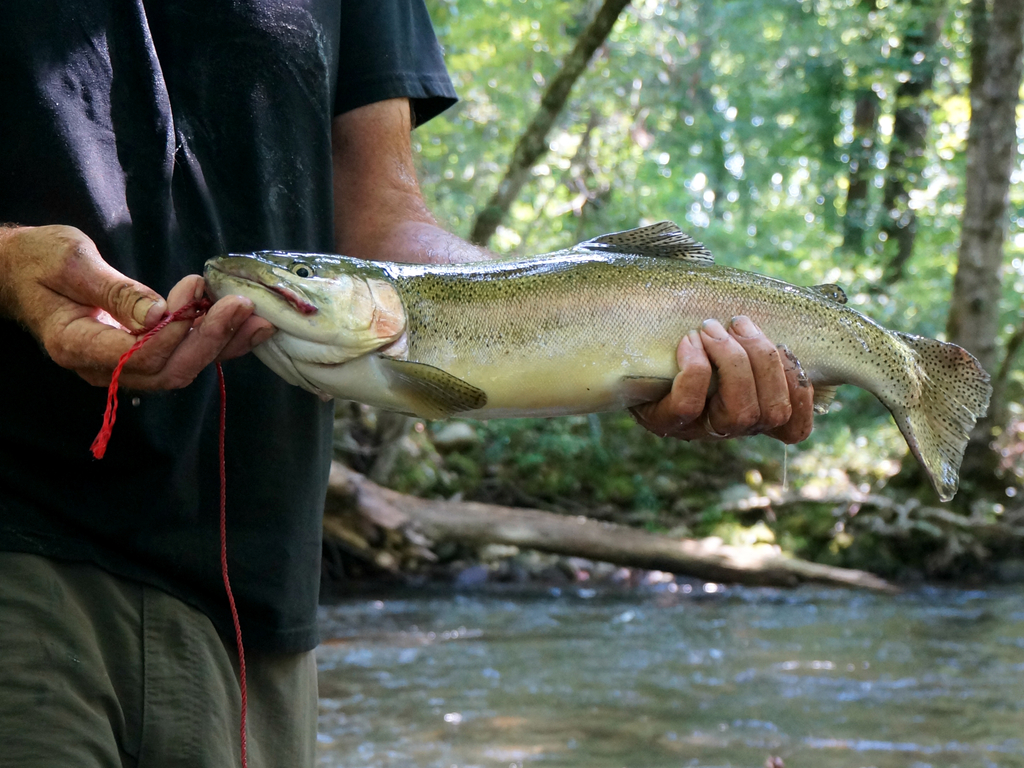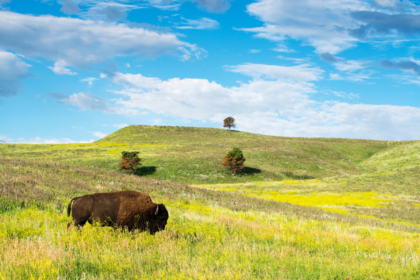When most people talk about fishing in North Carolina the mind wanders to open water and deep ocean adventures and don’t readily consider that there may be some amazing trout fishing in North Carolina.
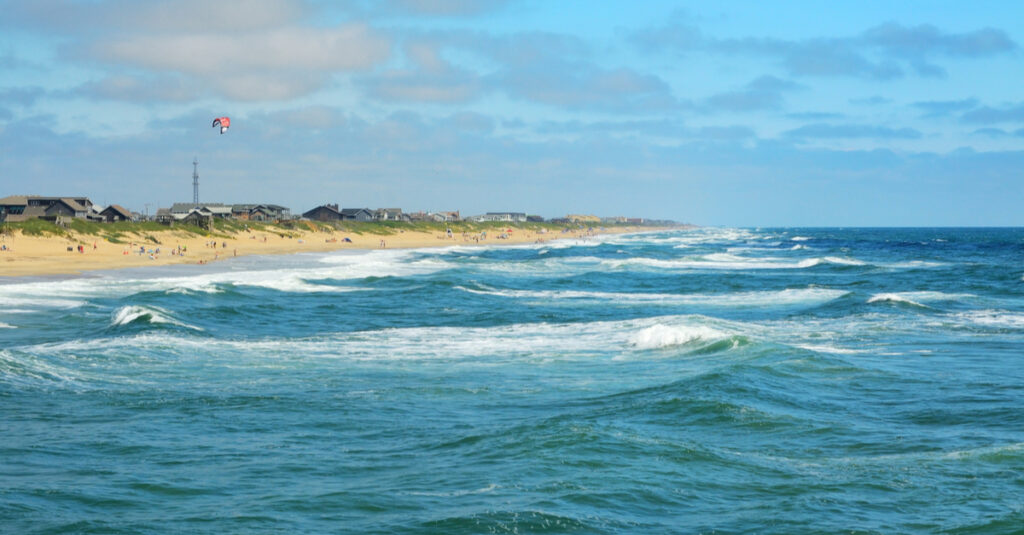
Kill Devil Hills, North Carolina
And with more than 300 miles of coastline on the Atlantic it’s not hard to see why – the salt water fishing in North Carolina is fantastic.
But more and more people are moving their eyes inland these days, fishing for monster trout up and down the more than 3,000 miles of rivers, streams, ponds, and lakes that North Carolina has within her gorgeous green borders.
In fact, some of the best trout fishing in the Appalachian Mountains can be found in North Carolina – particularly up in the western part of North Carolina.
There are a handful of big rivers that get a lot of the trout fishing publicity in the state – the French Broad being one of them – but there’s a lot more trout fishing in North Carolina action to be found for those that are willing to adventure a little bit off the beaten path.
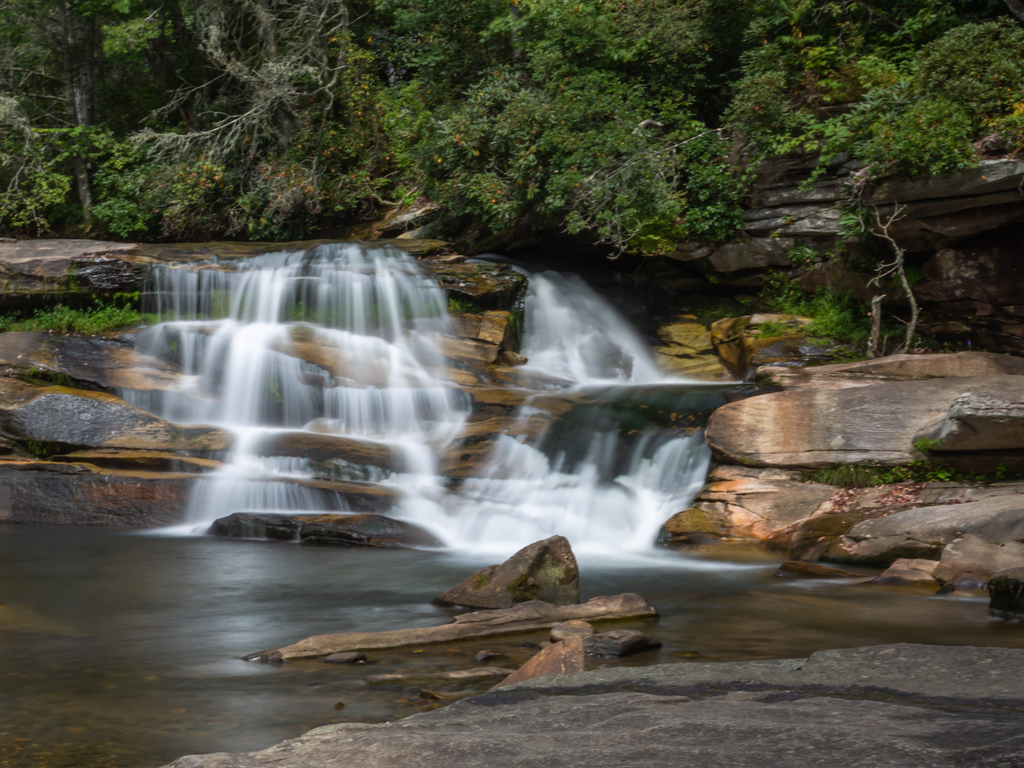
In this detailed guide we highlight (almost) everything you need to know about fishing for trout in this East Coast state.
You’ll learn about the kind of trout available to be fished in the state of North Carolina, gear you’ll need to land them, licenses and stamps required to legally fish in these waters, and so much more.
We even run through some of the best trout fishing waters in North Carolina for those that are particularly trout hungry and want to get their lines wet!
Check out some of these spots and you won’t have to worry about going home skunked again.
Ready to jump right in?
Let’s do it.
Can You Trout Fish in North Carolina?
Not only can you do some trout fishing in North Carolina, but you’ll be able to do some of the best trout fishing anywhere in the world all over this state.
Because of heavy rainfalls and humidity, the western mountain areas of North Carolina are absolutely swimming in rivers, lakes, creaks, and ponds that are about as flush with trout as you can imagine.
Some of this water is easily accessible – we’re talking about just pulling off to the side of the road and practically tossing your line from the passenger seat – and some of it is harder to track down.
But there’s a ton of trout to be had in the state, so much so that people from all over the country (and even the world) are beginning to check out North Carolina and have a crack at the trout action.
The native trout population is healthy in NC, but it’s further supported with farmed stockers that get released at timed intervals throughout the year, too.
This is all done through the North Carolina Wildlife Resources Commission (NCWRC), with regular fishing drops happening most frequently in the spring. A couple of stocks happen in October and November, too – just to make sure the trout population along the Little River stays solid all year round.
Who’s ready to do some trout fishing in North Carolina?
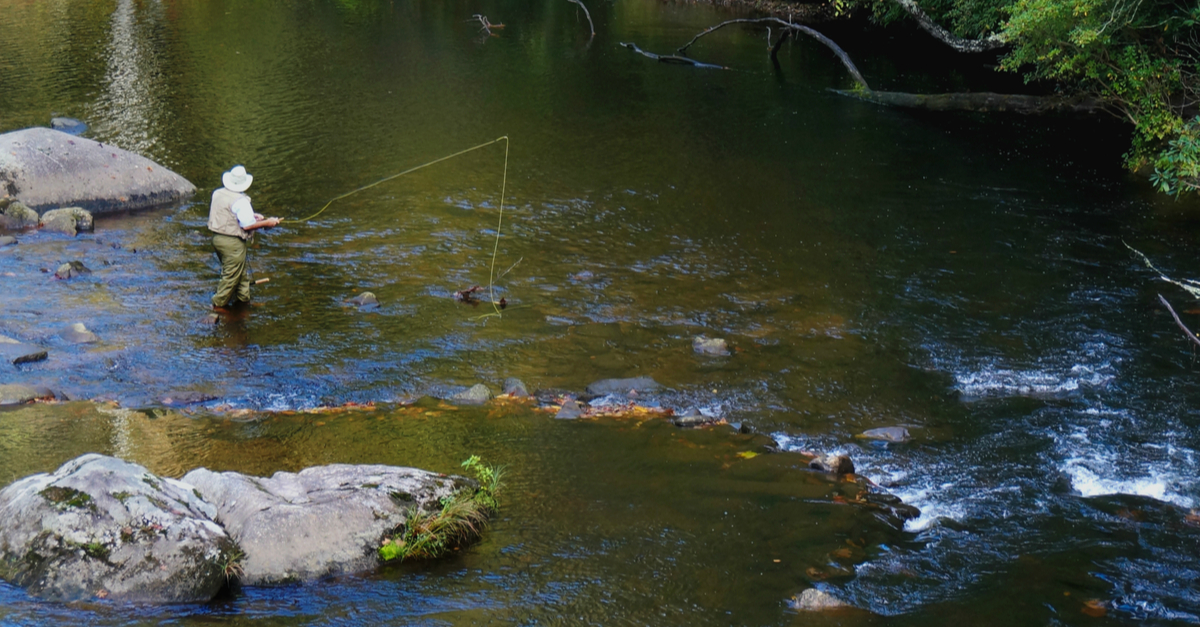
Do You Need a Special License to Trout Fish in North Carolina?
North Carolina has a couple of different licensing programs that trout anglers will want to be aware of, licenses that need to be bought and secured before a single line is tossed in the water.
Annual licenses are the most common licenses purchased in the state, with resident and non-resident options available.
The first license that anglers looking for trout will need is the State Inland Fishing license, priced at $25 for residents and $45 dollars for non-residents. This opens up fishing across the state, excepting any of the coastal fishing.
It even allows license holders to fish in the Public Mountain Trust Waters in North Carolina.
The Unified Inland/Coastal Recreational Fishing license is another option for trout anglers in North Carolina, specifically those that want to do some trout fishing on state game lands. Those with this license can fish in joint waters as well, without having to worry about any other special permits.
The prices for this license is $41 and is only available for North Carolina residents alone.
Any resident looking to do some trout fishing in North Carolina while receiving Medicaid, food stamps, or some sort of assistance program from the Department of Social Services can get a free Subsistence Unified Inland/Coastal Recreational fishing license as well.
North Carolina provides lifetime licenses for those that plan to do a lot of fishing (trout or otherwise) throughout the state for the rest of their days. The price on those licenses can cost $265 for $477, depending on the specific license that is purchased.
Finally, anyone looking to fish for trout outside of designated Mountain Heritage Waters are going to need to purchase a designated North Carolina Trout Stamp to go with their fishing license.
This trout stamp can be ordered by visiting www.ncwildlife.org or by calling 1-888-248-6834.
Is There a Season for Trout Fishing in North Carolina?
There are specific seasons for trout fishing in North Carolina, though the seasons change on a regular basis from year-to-year.
As a general rule, though, anglers are going to be able to go after trout in the state of North Carolina all year round without much headache or hassle.
The only season for trout fishing in this state has to do with hatchery supported waters. You won’t be able to fish between the first day of March and the last day of July each year in these fishery waters.
This gives the native fish plenty of opportunity to spawn, breed, and multiply without being disturbed. It also allows the fish a better chance to survive during the warmer weather in North Carolina.
Warm weather temperatures heat the trout water significantly, forcing the trout to fight a lot harder to find food but also lowering the overall amount of oxygen in water, too.
Outside of that window of time (and on “normal” waters throughout the state of North Carolina) you’ll be able to do trout fishing pretty much anytime you like.
What Kind of Trout Fishing is Available in North Carolina?
Thanks to the unique ecological history of trout throughout North Carolina you’ll find a really diverse array of fish in these mountain areas.
There are, however, four “primary” species of trout that you’ll be able to go after when you stick your line in the waters of North Carolina.
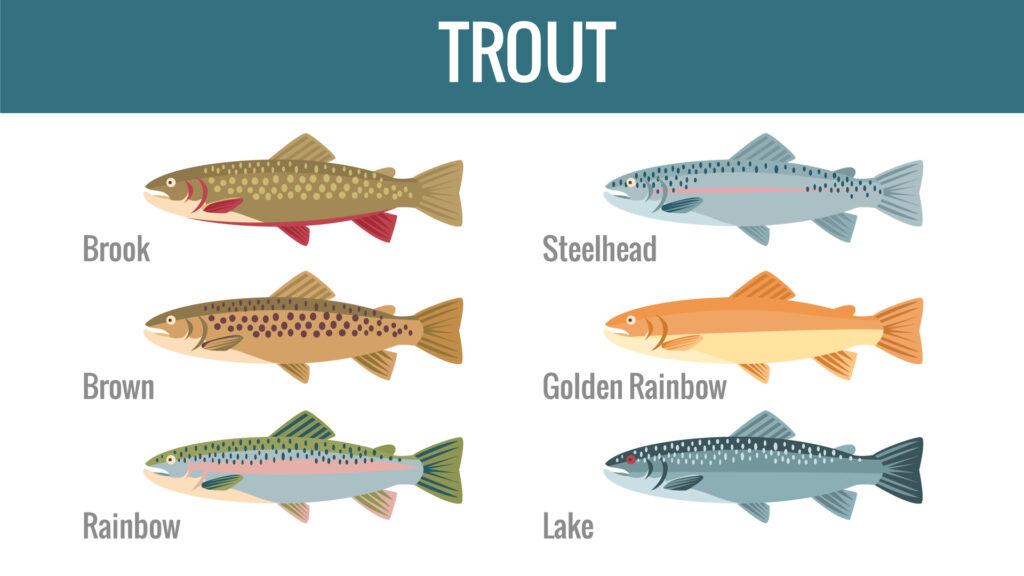
Brook trout (sometimes called specks or speckled trout) are a Northern Strain that are traditionally found throughout the northern watersheds across the eastern seaboard. It’s not uncommon to find southern Appalachian speckled trout native to the area in these waters, too.
The southern Appalachian speckled trout populations have decreased since then 1880s, though. A big part of that is because of the timber extraction that’s happened throughout the forests as well as the Chestnut Light in the early 1900s that destroyed a lot of the food sources for these fish.
Rainbow trout are found throughout North Carolina, both native and stocked versions, without too much headache or hassle.
There are dozens and dozens of “subcategories” of rainbow trout that you can find in these waters, and some of the biggest fish you’ll pull out of North Carolina are going to be of the rainbow trout variety.
Brown trout (primarily German Brown and Scottish Brown) trout are also really common throughout the rivers, streams, and lakes of North Carolina.
The overwhelming majority of the brown trout you’ll find here, though, are original stocker fish that were brought over to supplement the waters that used to be home to speckled trout. It’s not uncommon to find brown and speckled trout in the same water.
Finally, you have the elusive “tiger trout” that can be found in some select areas of North Carolina – a real trophy fish and a bit of a dream for a trout angler to land.
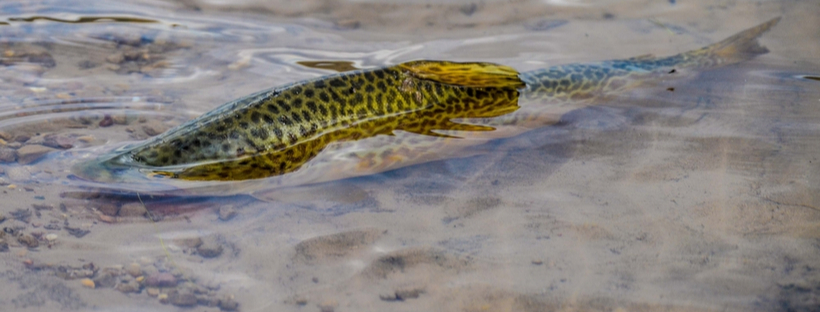
Tiger Trout North Carolina
These fish are unique hybrid strains of brook trout and brown trout that ended up spawning, producing a tiger trout in the process.
Drop-dead gorgeous, the markings on these trout are unlike anything else and the size of them can get spectacular, too. The trouble with tiger trout (the reason they are so rare) is that they are born completely sterile.
There is a “fit species” of trout available to be fished in North Carolina, too, if you count the NCWRC stocking trout.
Each and every one of these fish are raised in North Carolina hatcheries before they are released into waters all over the state. You can easily spot these fish by their appearance (especially when held up against native fish), but they are still plenty fun to go after.
Gear You’ll Want to Pack for North Carolina Trout Fishing
Those that are serious about going after trout in North Carolina are going to want to anticipate mountain climbs and excursions off the beaten path to find some really pure trout water.
Quality hiking boots are going to be essential for getting into some real trout hotspots, and you’ll definitely want to pack your waders in before changing into them on the side of the water, too.
Wear your waders while walking through the woods and you’ll inevitably end up filling them with sweat before you get to where you’re going!
You can get away with traditional hip boots during the warmer weather in North Carolina. But during the late fall through the winter and into the early spring you’ll want to be sure that you have insulated chest waders on.
You might even want to go with insulated options as the water can get really (really) cold up in the western mountains.
A fishing vest will help keep all of your gear that hand. Trout vests guarantee that you have all the tackle, flies, and equipment you need to land big river monsters without having to go back to the shoreline and retool.
Your rod and reel will depend entirely on the kind of fishing that you are looking to do.

Spin fishermen are going to want to stick to 5 foot or 6 foot lightweight or ultralightweight rods that have 4 to 6 pound monofilament attached. You can use pretty much any bait you like to use for trout here in these waters.
Fly fisherman, on the other hand, are going to want to go with rods that are 7 ½ feet to 9 feet long and come in between four and six weight. Floating or weight forward lines are useful for getting into some tightness and crannies with dry, wet, or nymph flies.
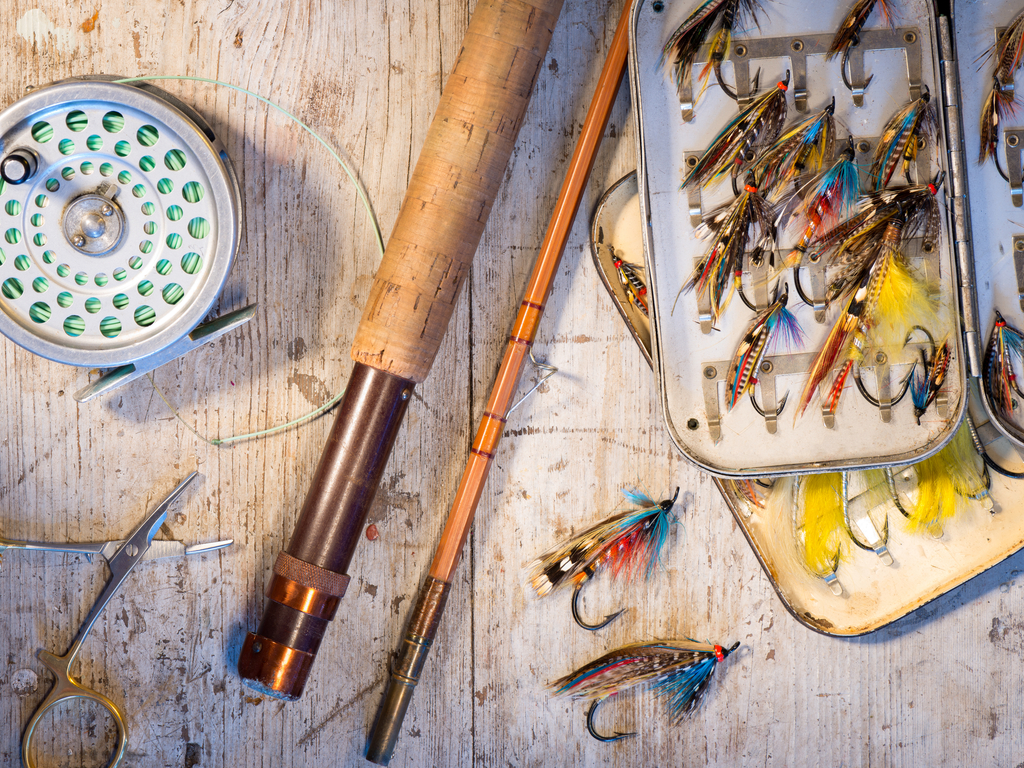
It’s not a bad idea to bring a landing that, forceps, your camera, and any other gear you like to have close at hand when you go hunting for trout, too.
The Best Spots for Great Trout Fishing in North Carolina
Every trout angler that’s spent time in North Carolina as their favorite “hotspot”, a spot they swear is the troutiest water anywhere in the Tar Heel state.
We aren’t interested in stepping on anybody’s toes or blowing up anybody’s favorite spot, though.
Instead, we breakdown some of the best options for anglers that are looking to do a little bit of adventuring to find their new favorite below.
You’re going to love the fishing at any of these spots!
Big Snowbird Creek Trout Fishing
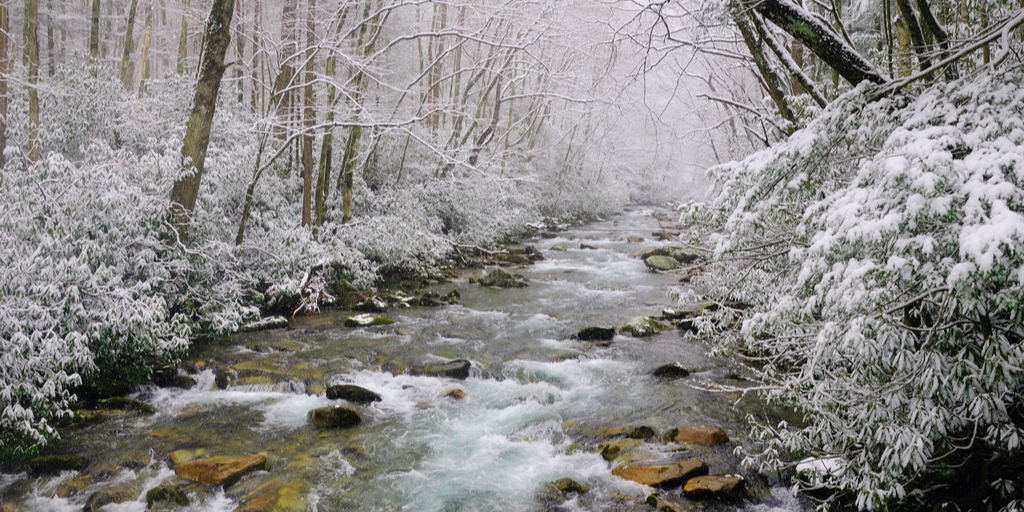
Tucked away in the southwestern corner of the state, you’ll have absolutely zero trouble whatsoever finding red-hot trout holes anywhere along this river. Plenty of folks have pulled out a “Smoky Slam” – a while brown, rainbow, and brook trout all-in-one excursion – from these waters!
Stick to the stretches that are upstream from Junction and you’ll have a much better chance of landing wild fish than stockers.
Davidson River Trout Fishing
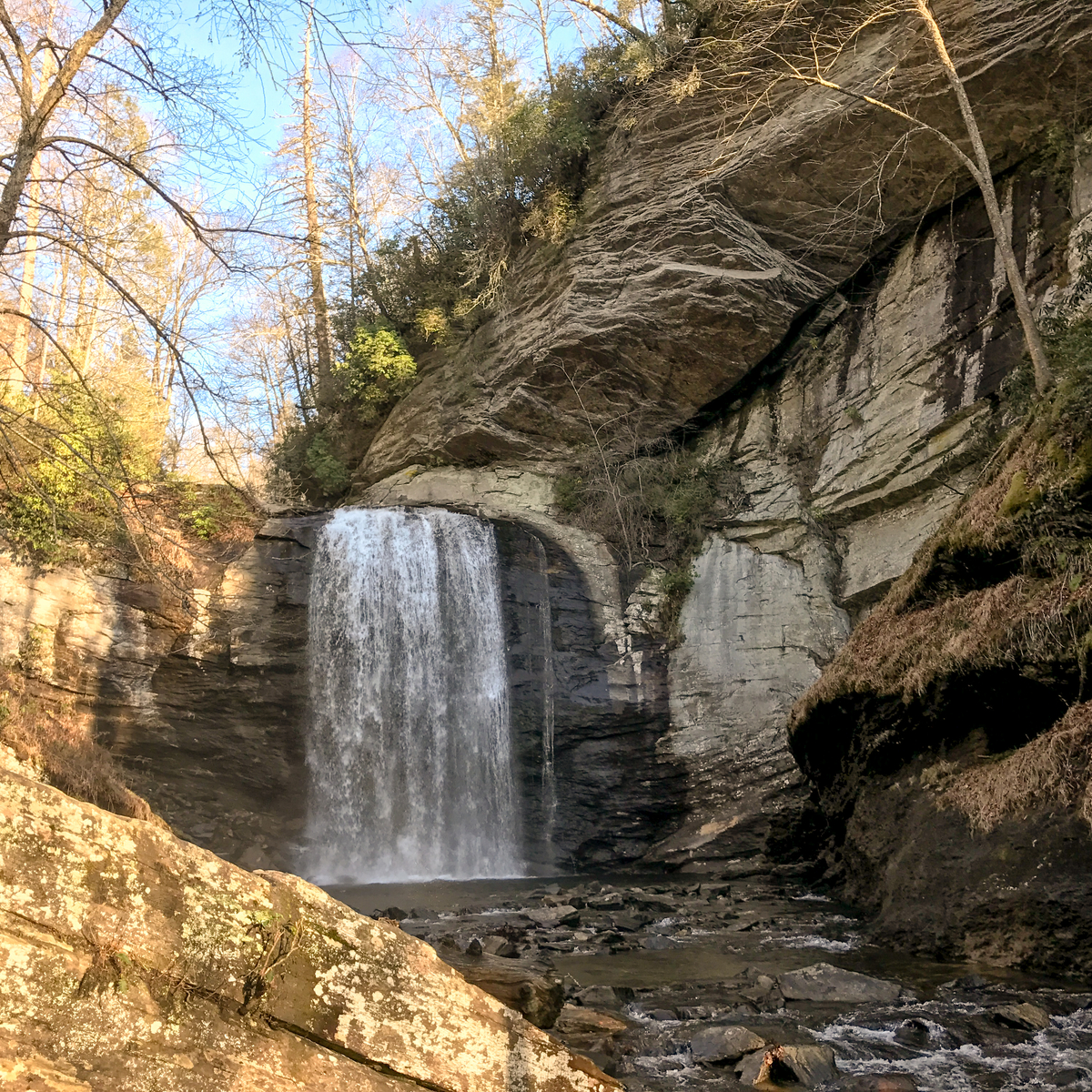
This whole run of river is designated by the state as “catch and release for fly fishing only”, so spin bait anglers are going to need to look elsewhere.
But if you are a fly fisherman (even if you’ve been thinking about toying with tossing these gentle lines in the water while visiting North Carolina) this is a hotspot you absolutely have to try.
Go down into the lower reaches and you’ll find a lot more stocked fish than wild ones, but the action here is almost nonstop all year round.
Deep Creek Trout Fishing
The lower stretches of Deep Creek see a lot of action from the park, a lot of pressure, and have helped to create some really picky trout.
As soon as you get a couple of miles out of the park, though, things taper off – and once you hit the Bumgardner Bend on the upstream area you’ll be able to really cut loose.
Deep Creek is very much brown trout water through and through, but there are more and more rainbows being pulled out of this water all the time.
Forney Creek Trout Fishing
The reason that Forney Creek is such a popular trout stream in North Carolina is because it stays pretty distant from the boat launching areas that are directly on the opposite side of this lake.
It takes a bit of a hike to get to, to be fair, but that means that there’s a lot less fishing pressure for anglers to be worried about. Start your hike in from the “Road to Nowhere” and you’ll be on some world-class fishing water in North Carolina in about 15 minutes.
If you love to go after medium-sized rainbows and browns that can grow into real whoppers, this is where you’ll want to do some serious trout fishing in North Carolina.
Hazel Creek Trout Fishing
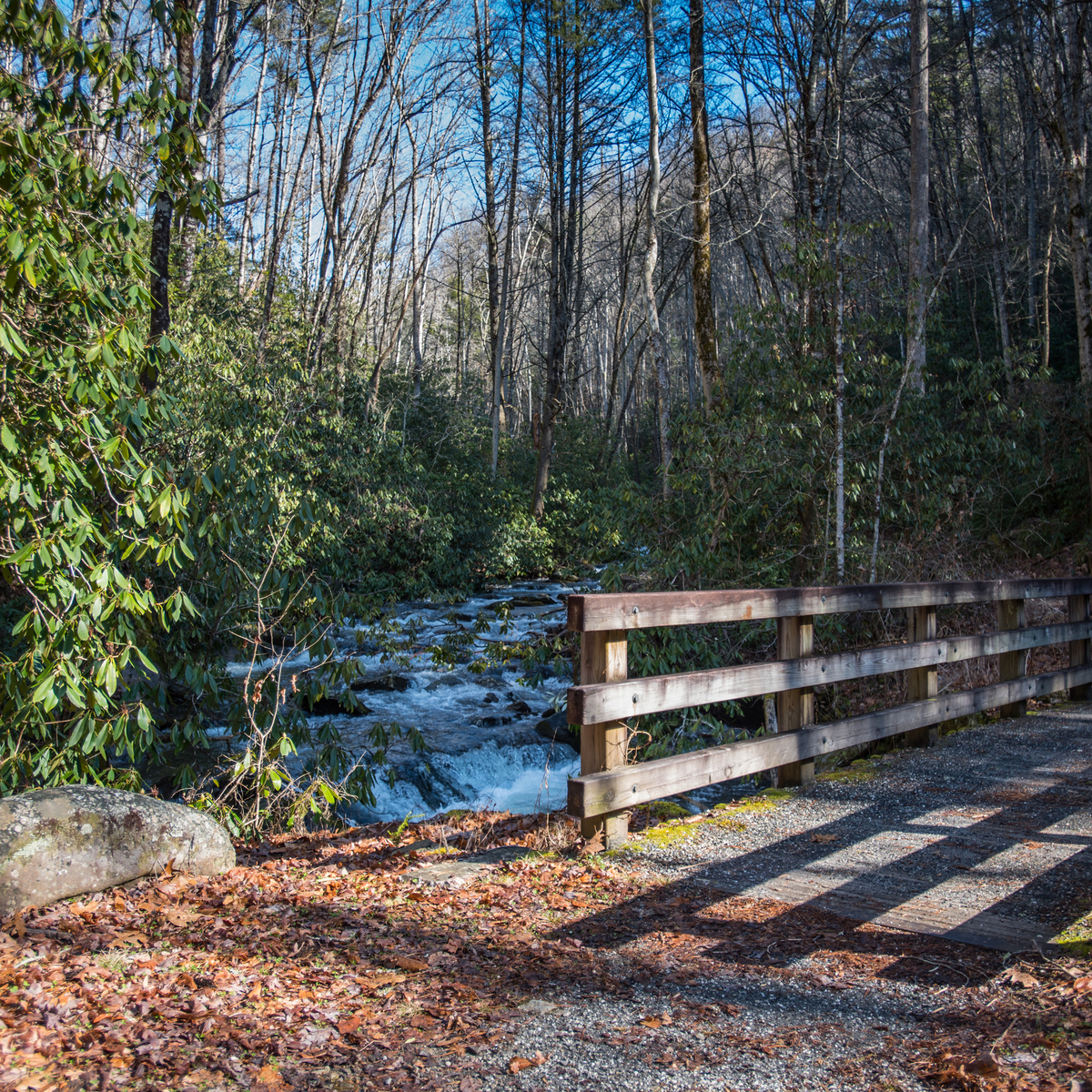
Trout fishing in North Carolina on Hazel Creek is a bit of a double-edged sword.
On the one hand, the fishing here is so good that this is probably the best known trout fishing river in the state. It draws folks from all over the country (and around the world, even) to come try their hand.
On the other hand, though, you have people from all over the country and all over the world fishing this water all the time! Talk about fishing pressure.
Still, Hazel Creek is filled almost exclusively with wild trout and some of the most beautiful brown and brookie fish you’ll pull out of the Tar Heel state. It’s worth having a poke even if you have to elbow around folks just to get down to the water side.
Lost Cove Creek Trout Fishing
This is another trout waterway in the state of North Carolina that is considered “catch and release, fly fishing only” all year round. A major part of some big North Carolina Wildlife Resource Commission programs, this place is absolutely loaded with big fish – especially while rainbows.
You can still find some brown trout every now and again, and even some brookie fish on occasion, but those that love monster rainbows are going to fall in love with this water.
Nantahala River Trout Fishing

Nantahala River, NC in Autumn
If you only had one river to fish in all of North Carolina and absolutely, positively had to pull out a big trout this would be the river that you went to.
The lower stretches of this river are some fantastic tail waters filled to the brim with trout, even if you have to navigate around whitewater enthusiasts that love to shoot down these roaring rapids.
Sometimes it feels like there’s a non-stop armada of canoes, kayaks, and inner tubes that come flooding down this river. And that can get really annoying when you just want a nice relaxing, calm day out on the water.
But the fishing is too good to let that bother you!
The overwhelming majority of the lower river can be waded effectively, even when the snow from the mountains starts to melt off and causes the river to rise.
There’s a reason that Trout Unlimited pick this as one of the top 100 streams nationally, after all. You don’t want to miss out on it!
Closing Thoughts
So there it is, our detailed guide to trout fishing in North Carolina!
Use the inside information above and you’ll have no trouble whatsoever getting the right licenses and permits, stowing the right gear, and finding the best trout water in the state to make sure that your next fishing outing.
Just don’t be surprised if you find yourself hooked on trout fishing in this state.
It’s some of the best in the country but nowhere near as jampacked as it is out west in places like Montana. At least not yet, anyway!
References
https://www.planetware.com/north-carolina/top-rated-rivers-for-trout-fishing-in-north-carolina-us-nc-51.htm
https://www.flyfishingnc.com/
https://www.visitnc.com/story/uySP/mountain-trout-fishing-in-western-north-carolina
https://cullowheeriverclub.com/blog/6-best-spots-for-trout-fishing-in-western-nc/
https://captainexperiences.com/blog/2021/01/fly-fishing-north-carolina-is-a-must
https://www.gameandfishmag.com/editorial/fishing_trout-fishing_nc_0508_02/241754

